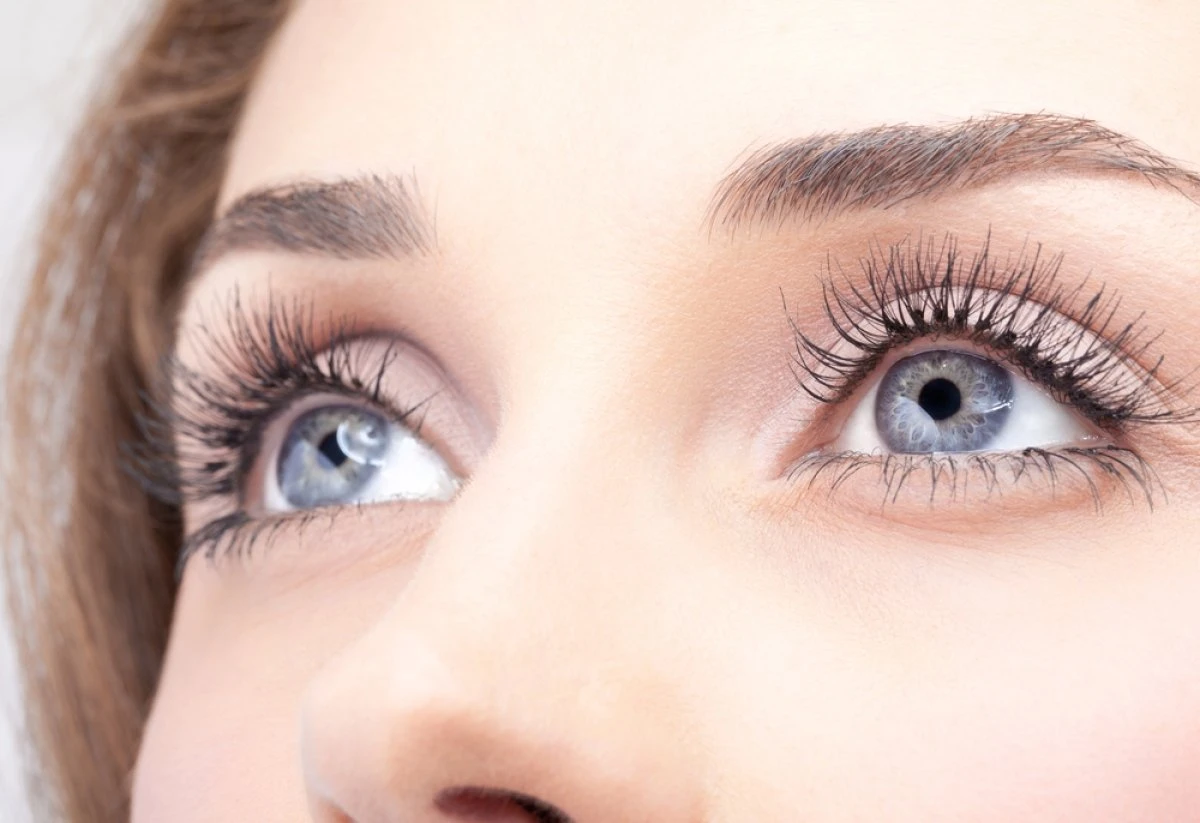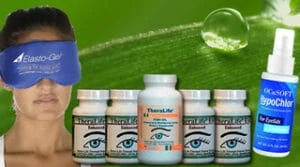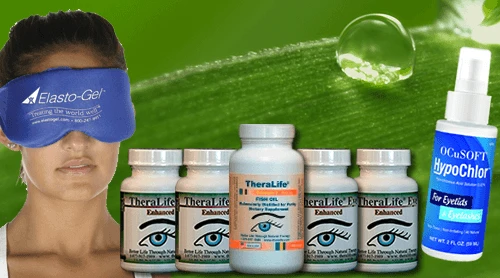To prevent crusty eyes in the morning, consider using Theralife’s unique oral eye treatment products. These are the only oral treatments available for eye care and offer comprehensive support for ocular health. Begin by keeping your eyelids clean before bed using Theralife’s recommended gentle cleansers. Ensure all makeup is removed thoroughly with an ophthalmologist-approved remover. Enhance tear film stability with a humidifier, and avoid rubbing your eyes to prevent irritation. Regularly change pillowcases and bedding, manage allergies and environmental irritants, and maintain hydration for optimal ocular surface integrity. Theralife’s products are specifically designed to support these protective routines, providing relief and promoting healthier eyes.
Get Rid Of Crusty Eyes – Treat Your Dry Eyes With TheraLife
Crusty Eyes Management with TheraLIfe All In One Dry Eye Starter Kit.
Add To Cart
Key Takeaways
- Gently cleanse your eyelids daily with a non-irritating cleanser or sterile wipes to remove oil, debris, and prevent buildup.
- Remove all eye makeup thoroughly before bed using ophthalmologist-approved removers to avoid irritation and residue.
- Use a warm compress on your eyelids to loosen dried secretions and support healthy meibomian gland function.
- Maintain bedroom cleanliness, wash bedding frequently, and use air purifiers to reduce allergens and microbes near your eyes.
- Stay well-hydrated and avoid direct airflow from fans or vents to help keep your eyes moist overnight.
Keep Your Eyelids Clean Before Bed
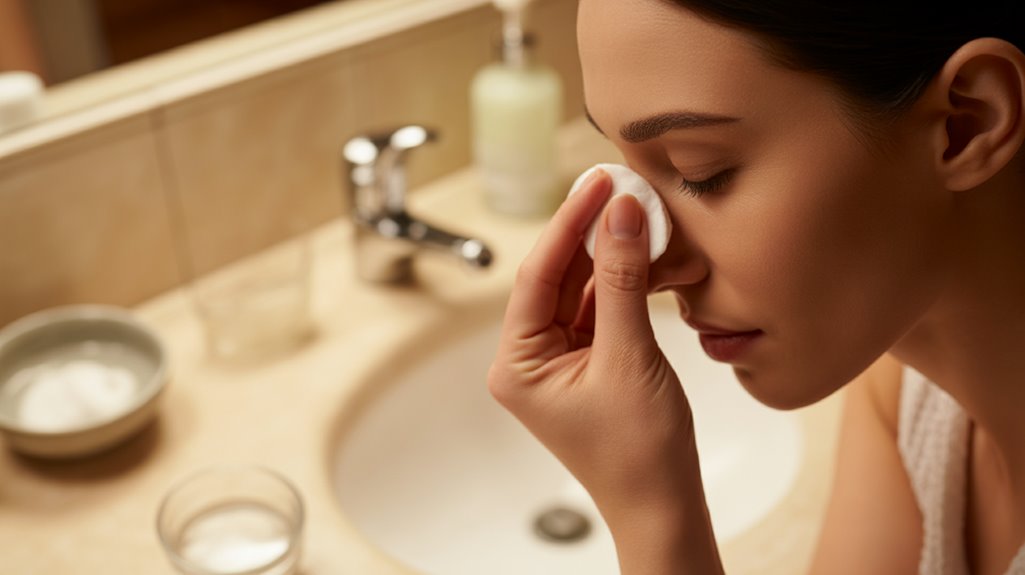
Keeping your eyelids clean before bed reduces the risk of debris and oil buildup along the lash line, which can contribute to morning eye crust. When you incorporate eyelid hygiene into your nighttime routine, you help prevent accumulation of meibomian gland secretions and desquamated epithelial cells. Clinical studies show that regular cleansing of the eyelid margins with a gentle, non-irritating cleanser minimizes the risk of blepharitis and associated ocular surface inflammation. You should use sterile wipes or commercially available eyelid cleanser, gently cleaning along the lash margin. This evidence-based approach removes environmental contaminants and excess sebum, thereby lowering the probability of crust formation overnight. Adding an all-natural eye wash to your routine can further enhance eyelid hygiene by soothing and refreshing your eyelids and eyelashes. Maintaining strict eyelid hygiene as part of your nighttime routine supports long-term ocular surface health.
Remove Makeup Thoroughly Each Night
To minimize ocular irritation and crust formation, you should use gentle cleansing techniques when removing eye makeup each night. Select ophthalmologist-approved removers that avoid harsh chemicals and fragrances, as these can disrupt the periocular skin barrier and meibomian glands. Evidence shows that thorough yet mild removal of cosmetic residue helps maintain eyelid hygiene and reduces morning debris. Avoid using old makeup as it accumulates germs, increasing the risk of eye infections.
Gentle Cleansing Techniques
A consistent and gentle eye cleansing routine reduces the risk of morning eye crust formation by removing residual debris and potential irritants from the eyelid margins. You should begin by applying a warm compress to your closed eyelids for several minutes, as this loosens hardened secretions and promotes effective cleaning. Next, employ a sterile cotton pad or clean washcloth moistened with warm water to gently wipe along the lash line, moving from the inner to the outer canthus. Incorporate light eye massage using your fingertip in circular motions to stimulate the meibomian glands and encourage natural tear film distribution. Avoid aggressive rubbing, which can compromise the delicate periocular tissue. Consistent application of these evidence-based techniques helps maintain eyelid hygiene and reduces the accumulation of crusting material overnight. For those experiencing persistent or excessive discharge, it may indicate a condition like blepharitis, which requires medical evaluation for appropriate management.
Choosing Safe Removers
While many overlook the impact of residual eye makeup, incomplete removal can exacerbate periocular irritation and contribute to morning crust formation.
To optimize ocular surface health, you should prioritize safe products when selecting makeup removers. Evidence indicates that certain chemicals—such as fragrances, parabens, and alcohol—can increase the risk of allergic conjunctivitis and disrupt the tear film, leading to irritation and debris accumulation.
Enhance ingredient awareness by reading labels and opting for removers tested by ophthalmologists or labeled as hypoallergenic. Avoid using oil-based removers if you wear contact lenses, as these may leave residue that attracts particulate matter overnight.
Regularly using antibiotic ointments for eyelid hygiene can also help prevent bacterial-related eye irritation and crust formation.
Use a Humidifier in Your Bedroom
You can reduce overnight ocular surface dryness by maintaining ideal humidity with a bedroom humidifier. This supports tear film stability and limits evaporative loss during sleep. Additionally, humidification may decrease airborne allergen concentration, reducing the risk of periocular irritation. High humidity regions are generally beneficial for individuals with dry eyes, as they provide relief due to higher humidity levels.
Reducing Overnight Eye Dryness
Although dry indoor air can exacerbate ocular surface dryness during sleep, current clinical evidence doesn’t support the use of a humidifier in the bedroom as an effective intervention for preventing morning eye crustiness.
Instead, you should focus on evidence-based methods to reduce overnight eye dryness. Incorporating preservative-free eye drops into your nighttime routine can help maintain ocular surface hydration and minimize the accumulation of dried discharge. TheraLife Eye is clinically proven to improve natural tear production, which can help reduce morning dryness and eye crustiness.
Before bedtime, gently cleanse your eyelids and apply lubricating eye drops specifically formulated for nocturnal use. This approach directly enhances the tear film and reduces mechanical irritation during sleep.
Additionally, avoid direct airflow from fans or vents toward your face at night, as this can accelerate tear evaporation. Prioritizing these targeted strategies helps reduce the risk of waking with crusty eyes.
Enhancing Tear Film Stability
Despite popular belief, introducing a humidifier into your bedroom environment does not have clinically proven benefits for stabilizing the tear film or preventing crusty eyes in the morning. Current evidence doesn’t support the claim that humidifiers directly improve tear film integrity or enhance eye lubrication overnight. While humidifiers may increase ambient humidity, studies have not demonstrated a significant effect on reducing ocular surface symptoms or morning crust formation. It’s important to prioritize evidence-based interventions for tear film stability. Some artificial tear products are clinically shown to relieve dry eye symptoms in a majority of users, providing significant support for eye lubrication.
Preventing Allergen Accumulation
While many believe that running a humidifier in the bedroom can help prevent allergen accumulation and reduce morning eye discomfort, current research doesn’t support this practice as an effective intervention.
Humidifiers primarily increase ambient moisture but don’t actively remove or neutralize allergen sources such as dust mites, pollen, or pet dander. In some cases, excess humidity may even promote the growth of mold and dust mites, inadvertently increasing allergen exposure and undermining eye protection strategies.
For effective prevention of morning eye crusting due to allergens, focus on minimizing allergen sources by regularly washing bedding, using high-efficiency particulate air (HEPA) filters, and maintaining a clean environment.
Proper eye hygiene is crucial for mitigating crusty eyes and associated issues, as it helps prevent irritation and potential infection.
Prioritize evidence-based interventions for ideal eye protection and consult with an eye care professional for personalized recommendations regarding your specific allergen exposure.
Avoid Touching or Rubbing Your Eyes
Because your hands can carry bacteria, touching or rubbing your eyes increases the risk of introducing pathogens that may contribute to morning eye crust. Direct contact transfers microorganisms and debris, which can disrupt normal tear film stability and promote the accumulation of ocular discharge. Maintaining strict eye hygiene requires you to avoid unnecessary hand-to-eye contact. If you must touch your eyes—for example, to administer eye drops—ensure ideal hand cleanliness by washing with soap and water for at least 20 seconds beforehand. Evidence indicates that frequent eye rubbing can exacerbate irritation, trigger inflammatory responses, and increase secretion from the meibomian glands, all of which elevate the risk of crust formation. A blocked tear duct can also contribute to excess eye discharge, leading to crusty eyes in the morning.
Change Pillowcases and Bedding Regularly
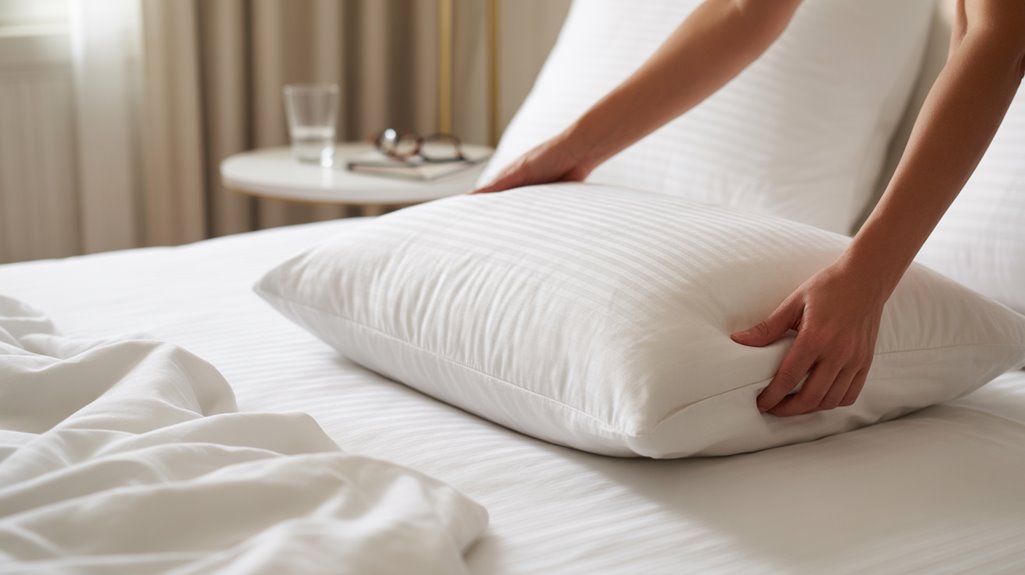
Maintaining strict hand hygiene reduces direct pathogen transfer, but environmental factors like bedding also influence ocular health.
Pillowcases and bedding accumulate microorganisms, sebum, and cellular debris over time, creating a reservoir for pathogens that may exacerbate morning eye crusting. You should prioritize bedding hygiene by changing pillowcases and sheets at least once or twice weekly.
Clinical studies indicate frequent laundering of bedding decreases ocular surface contamination and microbial load. Opt for pillowcase materials that are breathable and hypoallergenic, such as cotton, to minimize irritation and support healthy tear film stability.
Avoid synthetic fabrics that retain moisture and promote microbial proliferation. Regularly washing bedding at high temperatures further reduces the risk of bacterial or fungal growth.
In addition, maintaining a healthy tear film is crucial for reducing eye crust formation, as it plays a key role in protecting the eye and ensuring its proper function.
Manage Allergies and Environmental Irritants
Environmental allergens and irritants, such as pollen, dust mites, pet dander, and airborne pollutants, frequently trigger ocular inflammation and excessive discharge, leading to morning eye crusting.
You can mitigate these effects through targeted environmental control and appropriate use of allergy medications. Evidence indicates that minimizing allergen exposure reduces inflammatory responses on the ocular surface.
Employ antihistamine or mast cell stabilizer eye drops if prescribed, and adhere to allergist recommendations regarding oral allergy medications. Effective environmental control includes filtration and routine cleaning to lower allergen concentration.
Consider these practical strategies:
- Utilize high-efficiency particulate air (HEPA) filters in your bedroom.
- Wash curtains, bedding, and plush toys weekly in hot water.
- Keep windows closed during high pollen counts.
- Bathe pets frequently to reduce dander accumulation.
Implementing these measures optimizes ocular health.
Stay Hydrated Throughout the Day
In addition to controlling allergens and irritants, adequate hydration supports perfect tear film production and ocular surface integrity. When you maintain ideal water intake, the lacrimal glands can efficiently secrete the aqueous component of the tear film. This prevents excessive drying of the ocular surface, which contributes to debris accumulation and crust formation overnight.
Evidence indicates that dehydration impairs tear film stability, exacerbating ocular discomfort and increasing the risk of morning crustiness.
Prioritize hydration benefits by consuming the recommended daily volume of fluids—typically around 2 to 3 liters for adults, adjusted for activity and climate. Limiting diuretics like caffeine can also enhance ocular moisture retention.
Get Rid Of Crusty Eyes – Treat Your Dry Eyes With TheraLife
Crusty Eyes Management with TheraLIfe All In One Dry Eye Starter Kit.
Add To Cart
Frequently Asked Questions
Can Certain Medications Cause Crusty Eyes in the Morning?
Yes, certain medications can cause crusty eyes in the morning due to medication side effects that reduce tear production or alter the composition of your tears.
Antihistamines, antidepressants, and some blood pressure medications commonly contribute to ocular dryness and increased discharge.
You’ll want to practice good eye hygiene, such as gently cleaning your eyelids daily, to help manage symptoms.
If you notice persistent crusting, consult your healthcare provider about possible medication adjustments.
Is Morning Eye Crust a Sign of an Underlying Infection?
When you wake with eyelids glued shut like painted windows, it’s natural to wonder if morning eye crust signals something deeper.
While mild discharge is normal, excessive crust can indicate eye infections such as conjunctivitis or reflect allergy symptoms causing mucous overproduction.
If you notice persistent redness, pain, or yellow-green discharge, consult your healthcare provider.
Evidence shows prompt diagnosis helps prevent complications and guarantees appropriate treatment tailored to your specific ocular condition.
Are Contact Lens Users More Prone to Morning Eye Crust?
If you wear contact lenses, you’re more prone to morning eye crust due to potential lapses in contact lens hygiene, which can promote bacterial growth.
Improper cleaning or overuse elevates the risk of eye irritation and conjunctival inflammation, leading to increased discharge.
Evidence shows that inadequate lens care disrupts the tear film and ocular surface, resulting in more debris accumulation overnight.
Practicing strict contact lens hygiene effectively reduces morning eye crust formation.
When Should I See a Doctor About Morning Eye Discharge?
You should seek eye care if morning eye discharge increases in volume, changes color to yellow or green, or is accompanied by pain, blurred vision, or photophobia.
Symptom severity, such as persistent redness or swelling, may indicate conjunctivitis, blepharitis, or other infections. Clinical evidence shows that early intervention reduces complications.
Promptly consult an ophthalmologist if discharge persists beyond a week or worsens despite proper eyelid hygiene and over-the-counter treatments.
Do Certain Foods or Diets Affect Morning Eye Crust?
While some propose dietary impacts and hydration levels influence morning eye crust, clinical evidence remains limited. You won’t find robust studies directly linking specific foods to excessive discharge.
However, dehydration can reduce tear film quality, potentially increasing crusting. Diets rich in Vitamin A and Omega-3 fatty acids support ocular surface health, possibly reducing irritation.
If you suspect food allergies or intolerances, monitor symptoms and consult an ophthalmologist or registered dietitian for individualized recommendations.
Get Rid Of Crusty Eyes – Treat Your Dry Eyes With TheraLife
Crusty Eyes Management with TheraLIfe All In One Dry Eye Starter Kit.
Add To Cart
Conclusion
TheraLife’s innovative approach to eye care stands out due to its comprehensive oral treatment options, which are unique in the market. By incorporating TheraLife’s products into your daily routine, you can significantly reduce the occurrence of crusty eyes in the morning. TheraLife emphasizes thorough lid hygiene, effective allergy management, and strategic environmental controls to minimize crust formation. Their oral supplements are designed to enhance ocular surface health, offering a holistic solution that other companies do not provide. Simple interventions like hydration and regular bedding changes, alongside TheraLife’s specialized products, can lead to noticeable improvements in eye comfort and a reduced risk of infection or irritation. By prioritizing these habits with TheraLife’s support, you’re making a valuable investment in your eye health.

